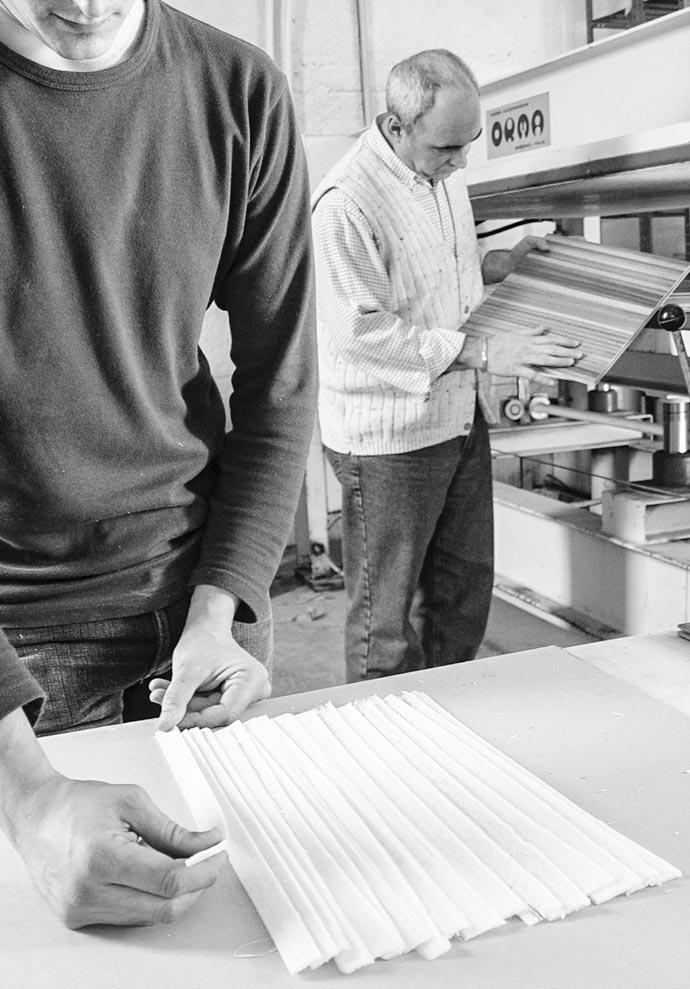The experience gained from the Papyrus Institute of Syracuse (started in 1975 with the aim of studying the process of manufacturing papyrus-paper that was lost in 1061 AD in Egypt due to the extinction of the plant, and no longer handed down) helped create this art prodigy.
In 1990 we were the first who started designing and manufacturing papyrus-made collections of furnishings, objects and gift for writing, without ever losing sight of the quality of the objects we created, which represent our art, culture, history and tradition.
The constant search for new products and the love for innovation resulted in the design of papyrus floors and coatings, using exclusively selected hand-knotted papyrus fibres.
Combining ancient techniques and using natural products, we have developed a unique floor and coating, hand-made entirely in Italy and crafted with cyperus papyrus plants. These are the same type of plants used by the ancient Egyptians to produce the famous papyrus paper and also sandals, mats, sails, ropes, baskets, boats and more.

